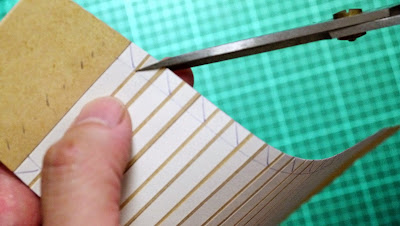Picking fabric as bellows building material is not an easy job, for what bellows needs is the fabric as thin as possible, but can block the light away.
Darkroom cloth is thin enough, but if you think it can totally keep light away, think it twice.
Maybe it can block normal strength of light beam, but under the strong sun light, you should be cautious. I had mentioned this in previous post of preparing bellows material.
And I also mentioned that material for bellows that camera manufacturing companies picked, are rarely found in the market for common people, I believe that they are custom made exclusively for cameras.
So not only we pick darkroom cloth as inner layer for they are easy to get, and we need to apply one or two layers of acrylic paint on it to enhance the light blocking.
But how do we know this do provide absolute light blocking function??
Well, let's find out.
Overlay darkroom cloth which has been sprayed with acrylic paint, and the leatherette you pick as outer layer on a flash light, flash face up.
Turn on the power, and trigger the flash in a dim lit room, inspect with naked eyes, if any light coming out of the surface of the leatherette, it means acrylic spray is not thick enough.
Rangefinder camera + Folder camera = RangeFolder, a new word that I created, and a new camera out of old ones.
Friday, May 15, 2015
Thursday, May 14, 2015
Last 6 adapters for SL66 camera left
Maybe I am the only one in the world who sells this adapter, but soon you have to find them on ebay I think.
http://salihonbashome.blogspot.tw/p/something-for-sale.html
Thursday, May 7, 2015
Answering the question
I received mail asking for the rib pairs, concerning if both ribs were cut the tip of corner, then there will be no hint when folding at the first time.
That is correct, I would say, it is not a problem to an experienced bellows builder, but for a green hand that could lead disaster at folding.
I would suggest keep one rib tip for each pair, so it would be easy to follow when folding.
In my example, shape A would be the sides for up and down side, and both inner layer and outer layer will leave seam at this shape, leaving tips at this side would be better.
When preparing the rib pairs for shape A, follow the shape outline instead of inner line as Post 6A instructed, so we have space to trim the tips.
Best draw slant lines as trimming guide, every other rib has the same trimming angle, so if you did not mark them, it will be easily do it wrong.
As image shown, I mark every other rib, to remind myself when trimming.
After trimming, let's layout all four side of rib pairs, you can see the difference now, comparing with the way previous mention in Post 6B.
This will help providing enough hints when folding bellows.
That is correct, I would say, it is not a problem to an experienced bellows builder, but for a green hand that could lead disaster at folding.
I would suggest keep one rib tip for each pair, so it would be easy to follow when folding.
In my example, shape A would be the sides for up and down side, and both inner layer and outer layer will leave seam at this shape, leaving tips at this side would be better.
When preparing the rib pairs for shape A, follow the shape outline instead of inner line as Post 6A instructed, so we have space to trim the tips.
Best draw slant lines as trimming guide, every other rib has the same trimming angle, so if you did not mark them, it will be easily do it wrong.
As image shown, I mark every other rib, to remind myself when trimming.
After trimming, let's layout all four side of rib pairs, you can see the difference now, comparing with the way previous mention in Post 6B.
This will help providing enough hints when folding bellows.
Subscribe to:
Posts (Atom)






